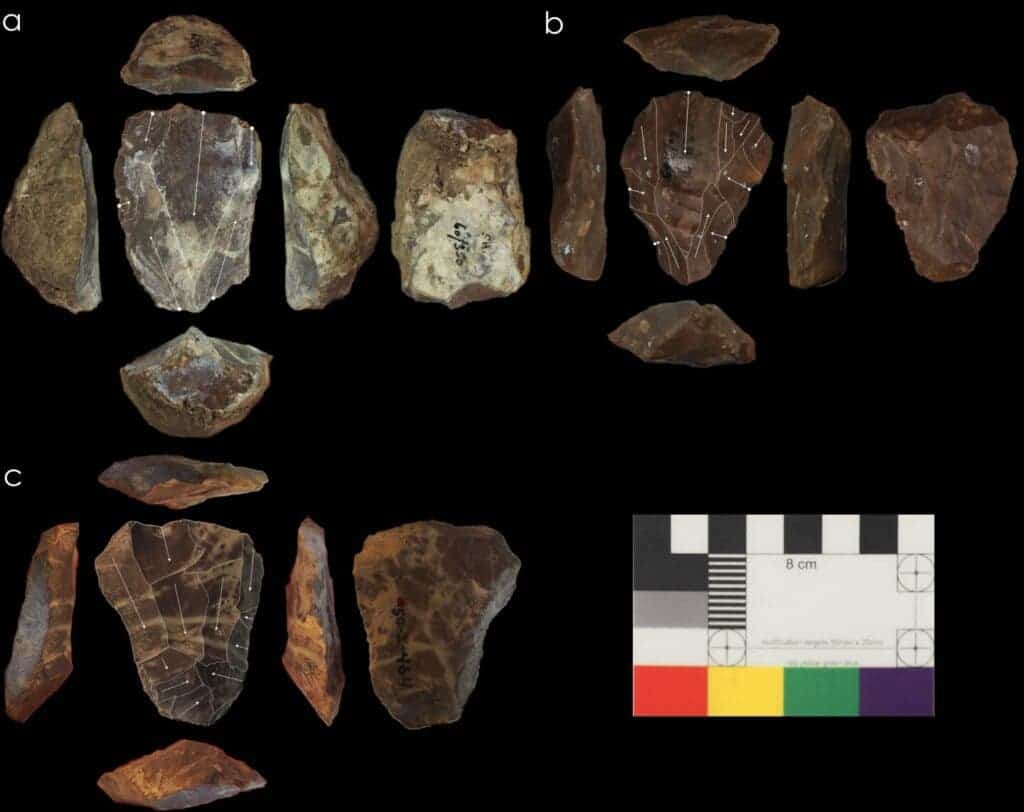In the good old days, when humans and Neanderthals roamed the land together, the Levallois technology was pretty much the best available technology of the time. It was essentially a flint knapping technique that may not seem like much to you nowadays, but offered distinct advantages over what was available before.
Until recently, it was thought that only Homo sapiens had access to this technology and could use it, but a single tooth seems to challenge that belief. The tooth, long-held in a private collection, was recently re-analyzed. It appears to belong to a 9-year-old Neanderthal child and was linked to an assemblage that used Levallois technology, indicating that Neanderthals were capable of using the technique as well as humans. The study is notable because it challenges the long-held idea that Levallois technology is a trademark of human evolution.

The study started when researchers from the Max Planck Institute for the Science of Human History teamed up with international partners to re-examine the fossil and archaeological record of Shukbah Cave. Shukbah (or Shuqba) Cave in today’s Palestine was brought to the world’s attention by renowned archaeologist Dorothy Garrod in 1928. She reported a rich assemblage of animal bones and stone tools, often concentrated in well-marked hearths.
Garrod understood that the cave had been inhabited by hominins, and she also found one tooth (the one that now turned out to belong to a Neanderthal child). The hominin tooth shows clear Neanderthal characteristics, making it the southernmost known fossil specimen of this population/species, researchers note, adding that this is the first direct association between Neanderthals and Nubian Levallois technology.
“Professor Garrod immediately saw how distinctive this tooth was. We’ve examined the size, shape and both the external and internal 3D structure of the tooth, and compared that to Holocene and Pleistocene Homo sapiens and Neanderthal specimens. This has enabled us to clearly characterise the tooth as belonging to an approximately 9 year old Neanderthal child,” says Dr. Clément Zanolli, from Université de Bordeaux. “Shukbah marks the southernmost extent of the Neanderthal range known to date,” adds Zanolli.
All this from a tooth

Genetic evidence already shows that Homo sapiens and Neanderthals interbred several times in their evolutionary history, and now archaeological evidence is starting to suggest the two groups mingled more than a few times. This has broad ramifications for understanding our heritage, and
Shuqba offers a rare chance to link the tools with the people who used them.
“Sites where hominin fossils are directly associated with stone tool assemblages remain a rarity – but the study of both fossils and tools is critical for understanding hominin occupations of Shukbah Cave and the larger region,” says lead author Dr. Jimbob Blinkhorn, formerly of Royal Holloway, University of London and now with the Pan-African Evolution Research Group.
“Illustrations of the stone tool collections from Shukbah hinted at the presence of Nubian Levallois technology so we revisited the collections to investigate further. In the end, we identified many more artifacts produced using the Nubian Levallois methods than we had anticipated,” says Blinkhorn. “This is the first time they’ve been found in direct association with Neanderthal fossils, which suggests we can’t make a simple link between this technology and Homo sapiens.”
Although humans and Neanderthals used a wide range of stone tool technologies, the Levallois technology is special because it was thought to be uniquely used by humans. But we’re not as special as we once thought — or alternatively, the Neanderthals were just as special as us.
Further analysis could reveal even more about this assemblage, but Shuqba has different problems at the moment.
A cave in disarray

Although Homo sapiens and Neanderthals shared the use of a wide suite of stone tool technologies, Nubian Levallois technology has recently been argued to have been exclusively used by Homo sapiens. The argument has been made particularly in southwest Asia, where Nubian Levallois tools have been used to track human dispersal in the absence of fossils.
After Garrod left Palestine in 1928, no further archaeological work was carried out at Shuqba until 2000. Shuqba Cave is currently under threat due to Israeli road building, decay, lack of protection,and extensive garbage dumping. Recent research noted that archaeologists are more interested in “biblical sites” than places like Shuqba.
The area could still hold valuable findings, but plagued by disinterest and major waste-dumping problems, it seems more at risk than ever. The area has been added to the 2013 UNESCO “tentative list” for possible designation as a World Heritage Site, but there has been little progress.
The study was published in Nature Scientific Reports.






